© 2025 ALLCITY Network Inc.
All rights reserved.

Arizona Diamondbacks fans blew a collective sigh of relief this winter when 2021 saves leader Mark Melancon signed a two-year, $14 million deal as their team’s new closer.
While still a modest investment compared with the rest of the league, the deal was the largest financial commitment the Diamondbacks have made to any free-agent reliever in franchise history — and a sign that the days of shopping for relievers in the clearance aisle may be over.
To say Melancon has struggled out of the gate would be a severe understatement.
After allowing just one earned run over eight innings in April, Melancon has allowed 10 earned on 11 hits and four walks in 3.2 innings in May. His ERA for the season has ballooned to 8.49, accompanied by an unsightly 2.14 WHIP.
The fact that Melancon is a proven commodity inspires confidence that he can turn things around, but there’s also evidence to suggest that his age is catching up to him.
The 37-year-old has seen his cutter velocity drop from 92 mph last year to 90.4 mph, which is the lowest mark of his career. His groundball rate of 51 percent is his lowest since 2012. His hard-hit rate is the highest of his career.
Melancon’s never relied heavily on swing-and-miss, but the whiff rate on his curveball has dipped from 31 percent last year to 21.2 percent this year. Out of all pitchers with 10-plus innings pitched in 2022, Melancon has the second-lowest strikeout rate at 6.8 percent.
It’s not unreasonable to think Melancon’s struggles are partially due to lingering effects from his recent encounter with COVID-19. Still, the fact that Melancon’s velocity was down prior to his COVID IL stint suggests that’s not the only problem.
A well-respected veteran closer struggling with the Diamondbacks toward the end of his career? D-backs fans have been here before.
In fact, since general manager Mike Hazen took over in 2017, the team’s closing situation has hardly ever felt stable. To illustrate, here is a stats breakdown for every closer the team has had in that span.
| Year | Closer | SV | SVO | ERA | xFIP | WHIP | K% | BB% |
| 2017 | Fernando Rodney | 39 | 45 | 4.23 | 3.71 | 1.19 | 28.1 | 11.3 |
| 2018 | Brad Boxberger | 32 | 40 | 4.39 | 3.87 | 1.43 | 30.2 | 13.6 |
| 2019 | Greg Holland | 17 | 22 | 4.54 | 4.77 | 1.37 | 27.0 | 15.8 |
| 2019 | Archie Bradley | 18 | 21 | 3.52 | 4.06 | 1.44 | 27.4 | 11.4 |
| 2020 | Archie Bradley | 6 | 7 | 4.22 | 3.51 | 1.50 | 26.7 | 6.7 |
| 2020 | Stefan Crichton | 5 | 7 | 2.42 | 4.55 | 1.19 | 21.1 | 8.3 |
| 2021 | Joakim Soria | 6 | 8 | 4.30 | 4.14 | 1.33 | 24.8 | 6.4 |
| 2021 | Tyler Clippard | 6 | 9 | 3.20 | 5.96 | 1.30 | 18.9 | 9.9 |
| 2021 | Stefan Crichton | 4 | 4 | 7.33 | 6.19 | 1.93 | 14.5 | 10.3 |
| 2022 | Mark Melancon | 7 | 8 | 8.49 | 5.48 | 2.14 | 6.8 | 8.5 |
It’s no shock the numbers aren’t great across the board. But there’s more to the story than that.
Let’s take a closer look at the Diamondbacks’ closing situation by year since Hazen arrived, beginning with arguably their best in that stint — a pitcher fans aren’t likely to forget any time soon.
2017: Fernando Rodney
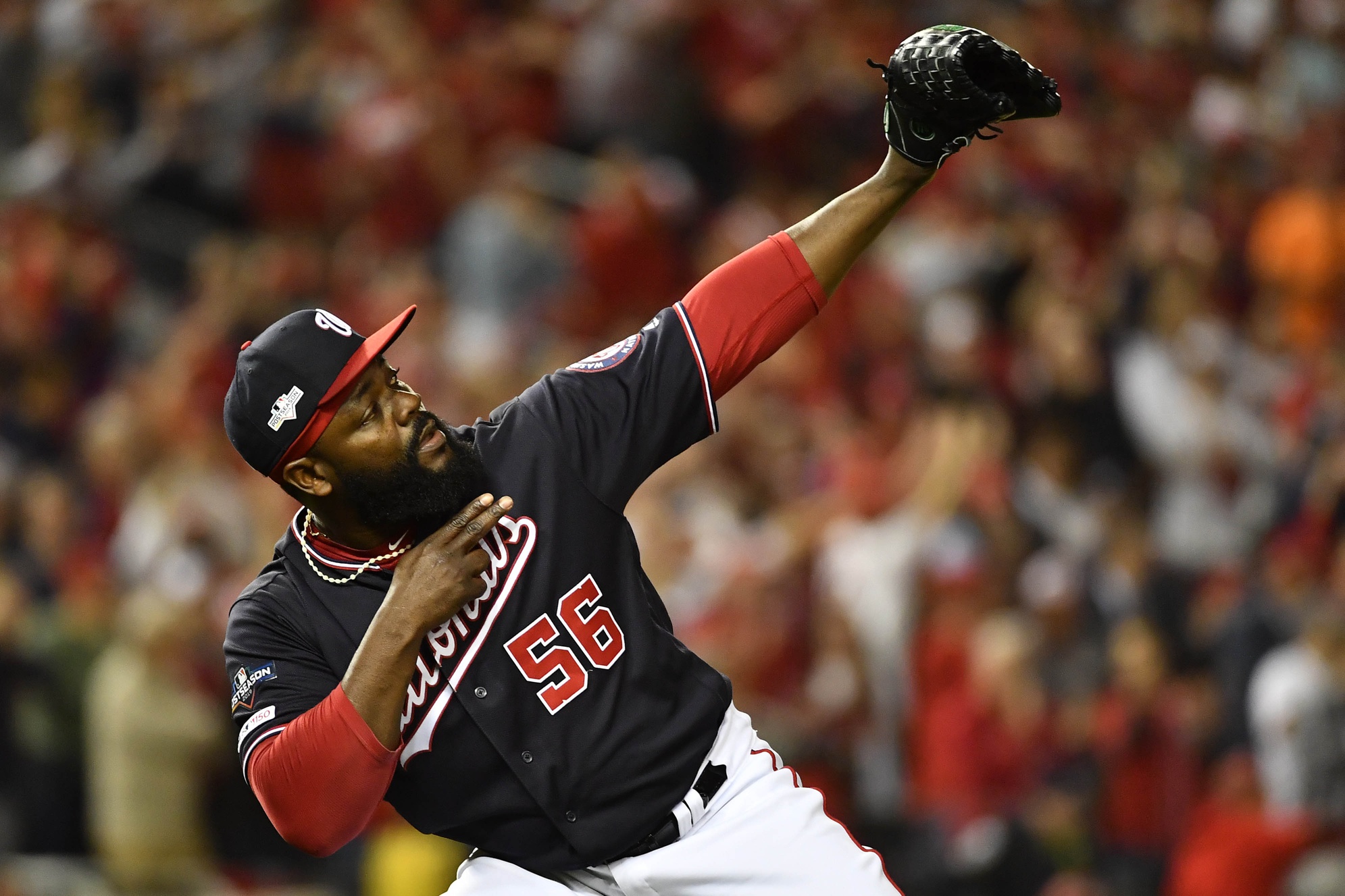
Much like Melancon, closer Fernando “La Flecha” Rodney didn’t exactly make a good first impression, allowing 14 earned runs in 10 innings in April. He had a 12.60 ERA and 2.30 WHIP at the end of the month.
Much to the chagrin of fans, manager Torey Lovullo stuck with his 40-year-old closer, and it paid off. Rodney didn’t allow a run in May or June, compiling a 2.38 ERA, 0.95 WHIP and .152 opponent batting average the rest of the season. After allowing two homers in April, Rodney allowed one the rest of the way.
A 4.23 ERA certainly doesn’t jump off the page for a closer, but it was a best-case scenario after his atrocious start. In the end, Rodney was a big reason the Diamondbacks won 93 games in 2017.
As I wrote about over the offseason, he is also the only free-agent reliever in Hazen’s tenure who has outperformed his contract.
D-backs fans can only hope Melancon follows a similar course after his shaky start.
2018: Brad Boxberger
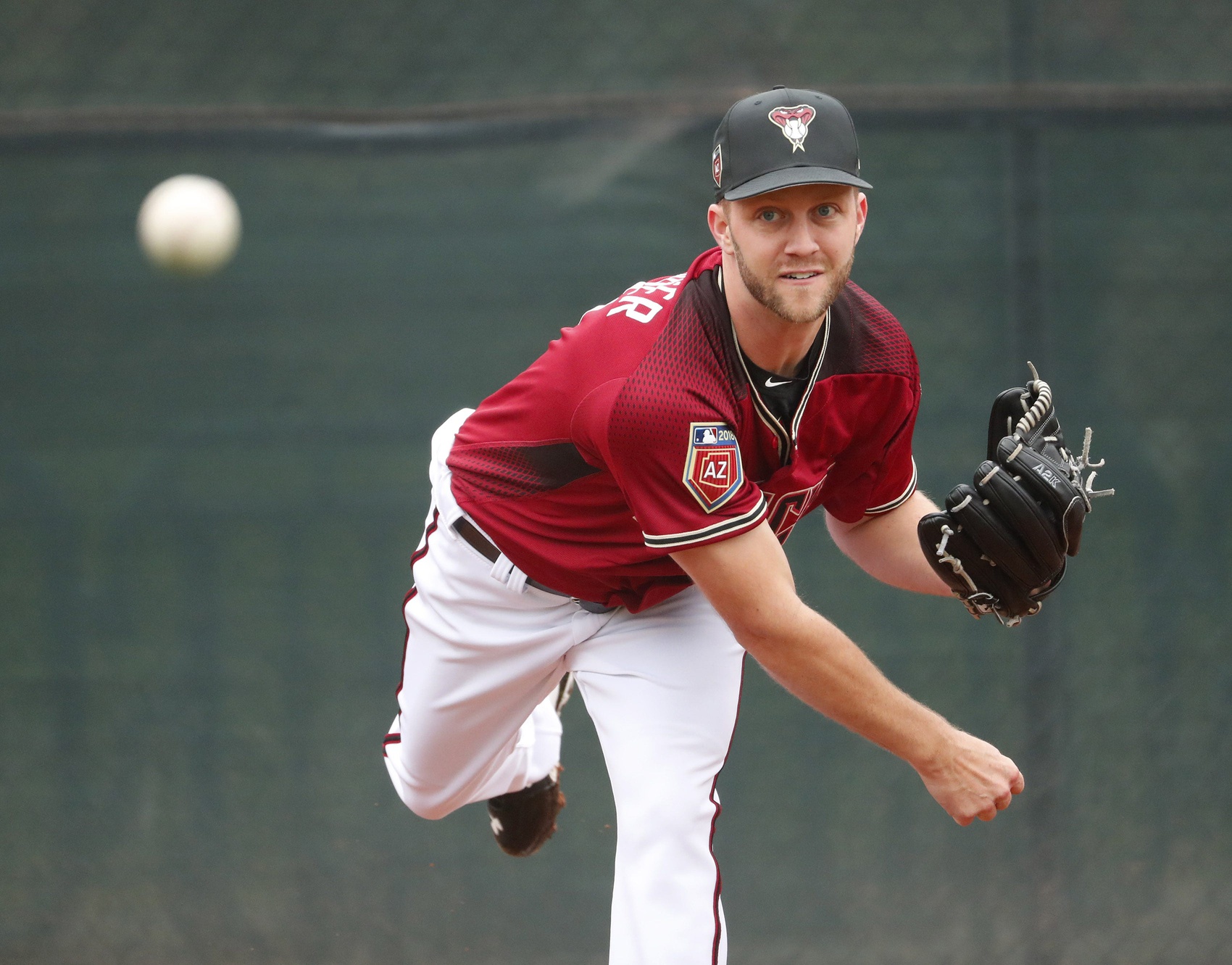
Presumably scared off by Rodney’s age, the Diamondbacks didn’t bring him back for 2018, instead acquiring right-handed pitcher Brad Boxberger in a trade with the Tampa Bay Rays.
A full decade younger than his predecessor, Boxberger started well with his new team. Through the end of May, he was 13-for-14 in save opportunities with a 1.80 ERA, 1.15 WHIP and a 32.5 percent strikeout rate.
Unfortunately, his success didn’t last. For the remainder of the season, Boxberger went 19-for-26 in save opportunities with a 5.94 ERA, 1.59 WHIP and a walk rate north of 15 percent.
Despite many pleas to turn to Archie Bradley as closer instead, Boxberger kept the role throughout the season. That change alone wouldn’t have been the difference in the Diamondbacks making the playoffs that year, but Boxberger’s 11.37 September ERA as the closer certainly didn’t help.
The D-backs held a 1.5-game lead in the NL West on Aug. 30 of that year. They went on to lose 20 of their last 28 games, falling far outside the National League playoff picture.
Boxberger’s stint in Arizona proved short-lived, as the team non-tendered him in the offseason.
2019: Greg Holland, Archie Bradley
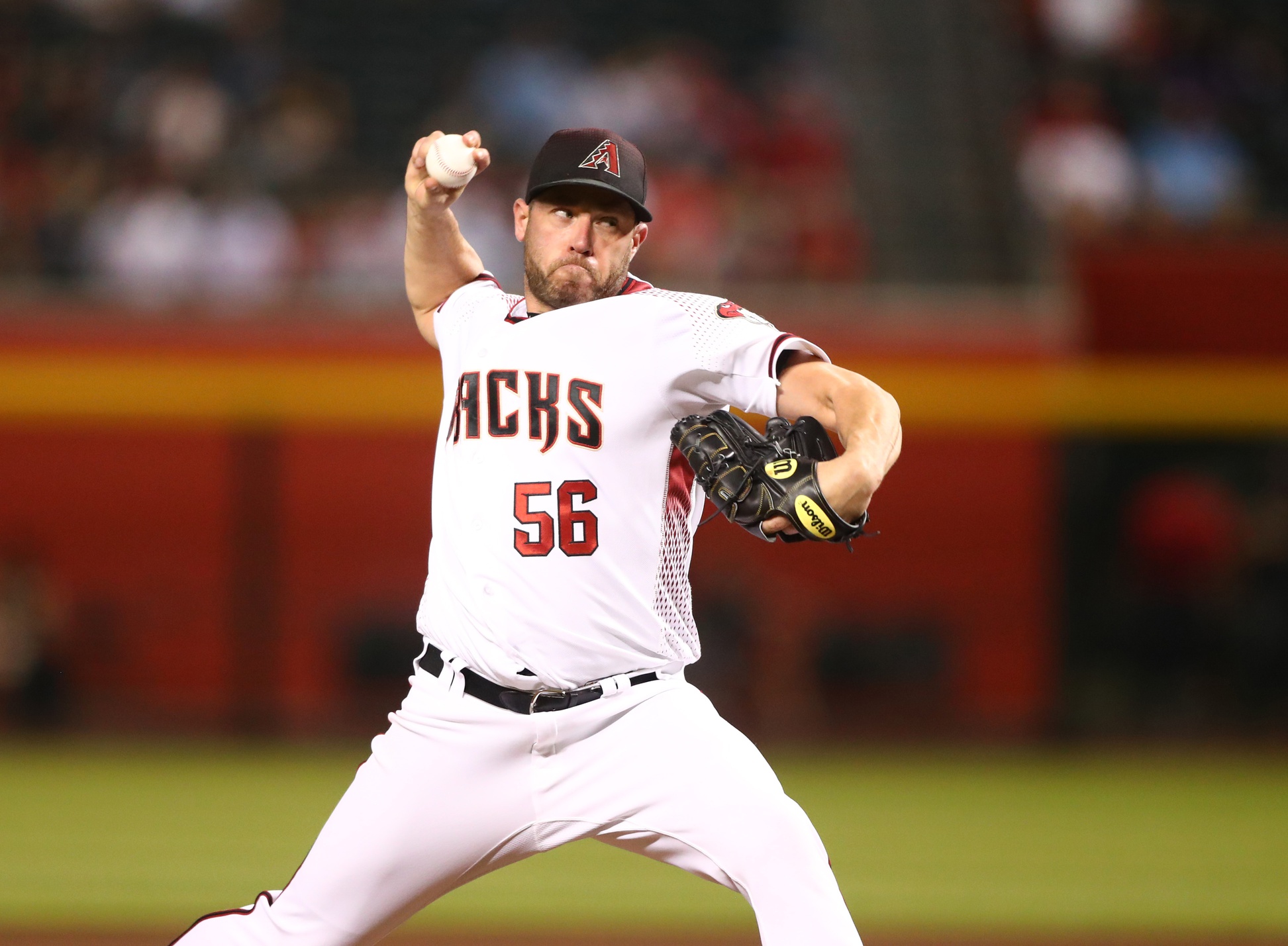
Several months later, Hazen and company brought in their third veteran closer in as many seasons. This time it was 33-year-old righty Greg Holland.
Like Boxberger, Holland started strong. It took 12 appearances for him to allow his first run of the season. On June 30, Holland was still sporting a 2.33 ERA, 1.00 WHIP and a .151 opponent batting average.
Then came the seemingly innocent day of July 2. The Diamondbacks held a 4-3 lead over the Dodgers at Dodger Stadium, and Lovullo brought Holland in to shut the door in the ninth.
Holland retired the first two hitters of the inning. Business as usual.
He then proceeded to throw 16 consecutive balls. Dodgers hitters had nothing to do but watch them go by, drawing four straight walks and scoring the tying run in the process.
Lovullo turned to T.J. McFarland to try to stop the bleeding. McFarland also walked in a run, and the Dodgers walked off on five consecutive walks — all with two outs.
Holland blew another save in Los Angeles the next day. He went on to allow a total 10 runs on 11 hits and nine walks over just 6.2 innings in July.
Before the end of the month, Lovullo had tabbed Archie Bradley as his new closer.
Holland was designated for assignment on Aug. 7, 2019. For the second consecutive year, the Diamondbacks willingly moved on from a closer before their team control expired.
2020: Archie Bradley, Stefan Crichton
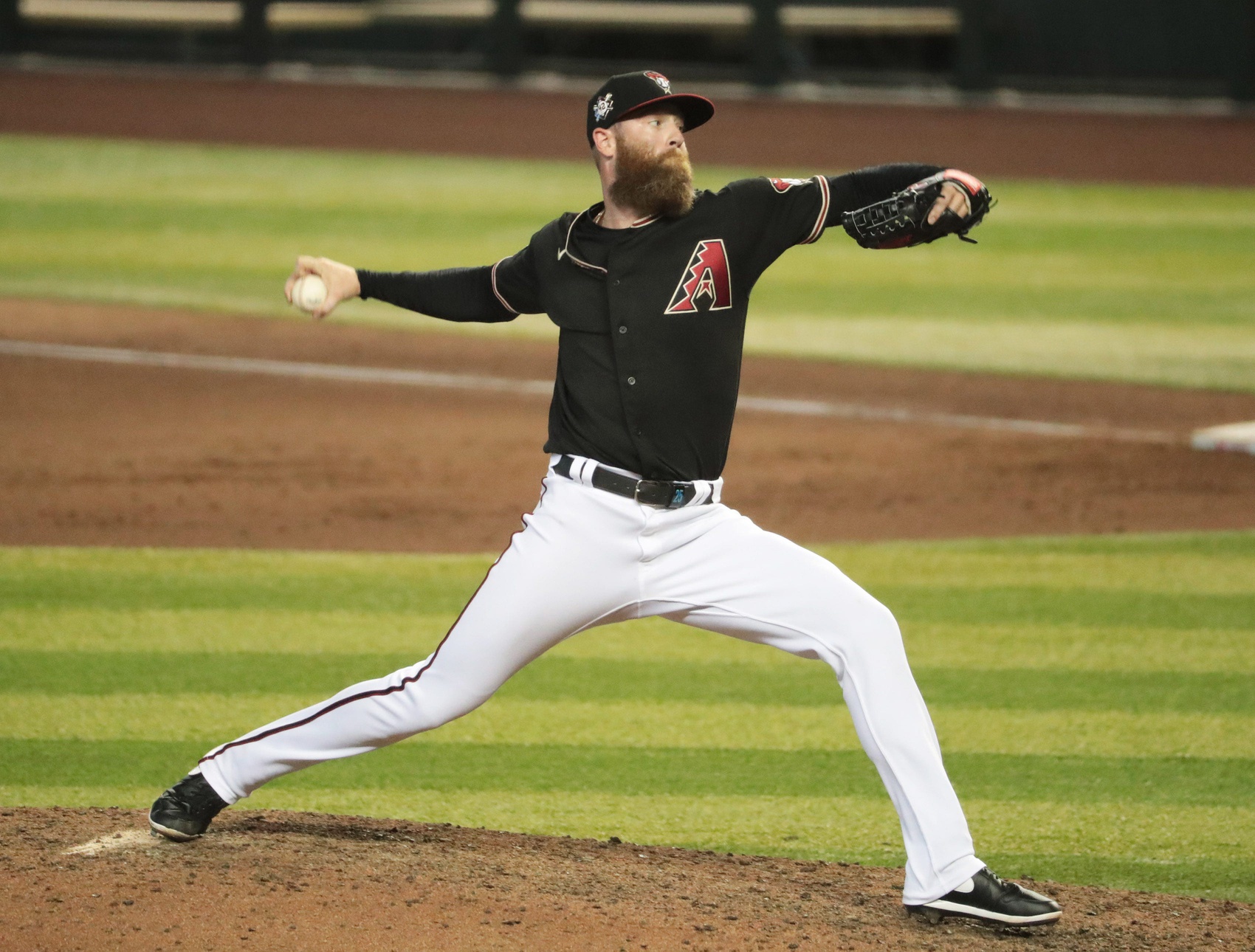
Bradley — the oft suspected heir to the closer throne — thrived in his new role. From his first day on the job on July 30, 2019, through his last appearance with the Diamondbacks on Aug. 30, 2020, Bradley posted a 2.72 ERA, 1.18 WHIP and 23.5 percent strikeout rate in 36.1 innings. He converted 24 of 26 save opportunities in that span.
Despite his success, an underwhelming 2020 season prompted the front office to move Bradley at the trade deadline to the Cincinnati Reds.
Stefan Crichton took over closing duties for the remainder of the season, converting on five of his six save opportunities and posting a 0.96 ERA in 10 appearances the rest of the way.
Ironically, while 2020 was one of the most underwhelming in recent Diamondbacks history, it was one of the strongest seasons they’ve ever had from a closing standpoint.
2021: Joakim Soria, Stefan Crichton and Tyler Clippard
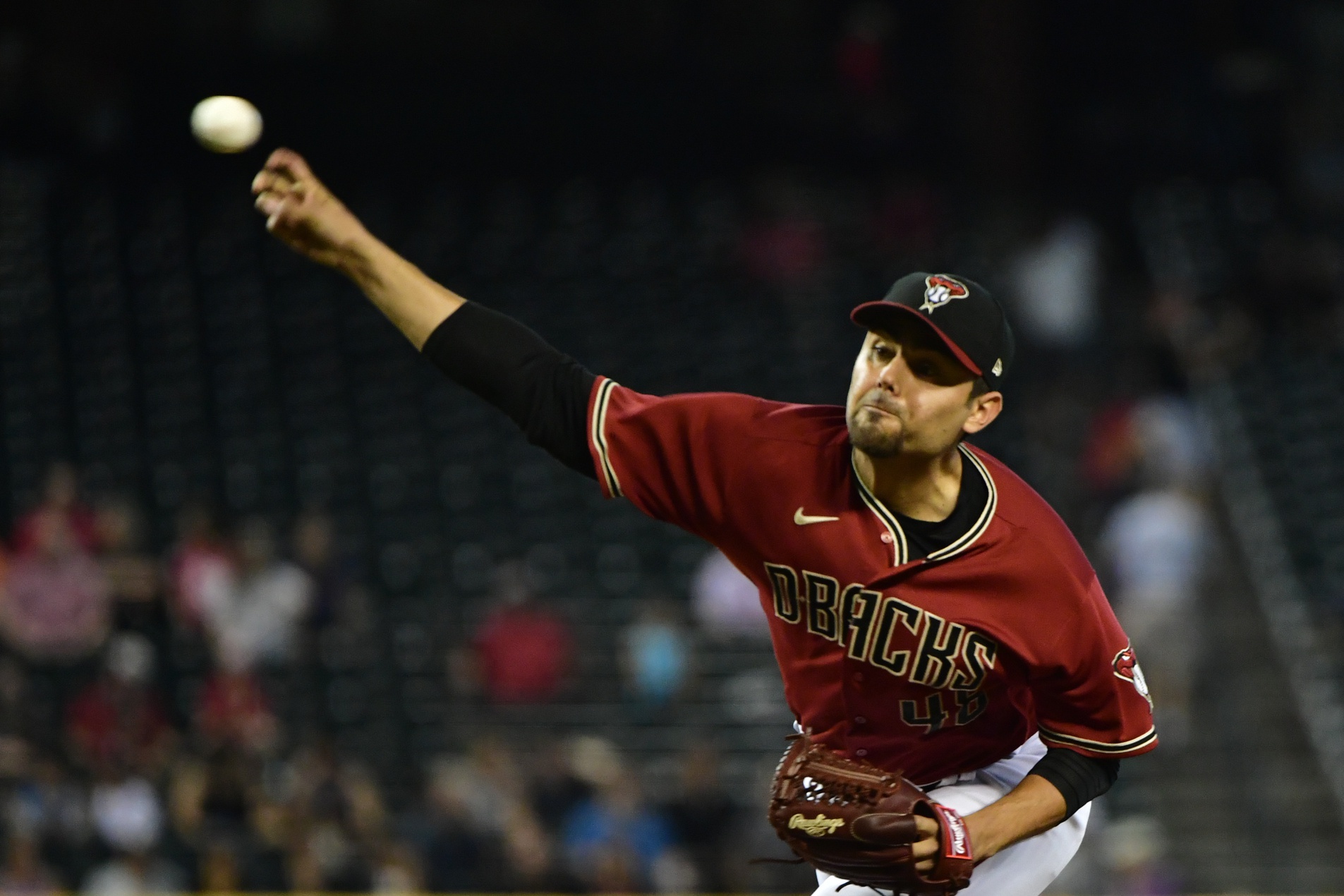
The 2021 season was forgettable in nearly every facet of the game for the Diamondbacks, and their closing situation was no exception.
Lovullo decided not to name a closer entering the season, and a plethora of injuries made it difficult for him to ever do so.
Free-agent signee Joakim Soria made only one appearance before hitting the injured list with a left calf strain on April 5. Crichton took on the majority of the closing opportunities in April. His ERA was high, but he didn’t blow a save.
For the remainder of the season, the closing role went to a combination of Soria and fellow offseason addition Tyler Clippard, who opened the year on the IL and didn’t return until late July.
The Diamondbacks accrued just 22 saves as a team in 2021, which was the fewest in the majors. Unsurprisingly, a 52-win team didn’t have much demand for a closer.
Still, they had the lowest save conversion percentage in the majors at 44 percent. The lack of a true closer was far from their worst problem, but it was a problem.
It’s abundantly apparent that Hazen has struggled to find reliable arms to close games throughout his tenure. Granted, he hasn’t had much financial flexibility to work with.
Even so, his decision to spend more than usual this winter on Melancon hasn’t paid dividends.
It would be unfair to pin this problem on Hazen, though. As I discussed a few months ago, the Diamondbacks have struggled with the bullpen since their inception.
For now, the team isn’t likely to contend regardless of who’s closing games. That may not be the case for long, though.
As the organization’s top-flight farm system continues to manifest itself in the majors, the time to push in the chips on the bullpen may not be far away. Fans can only hope that when the time comes, their team can crack a code that’s stifled them for decades.
Follow Jesse Friedman on Twitter
Top photo: Joe Camporeale/USA TODAY Sports
Get Arizona's Best Sports Content In Your Inbox!Become a smarter Arizona sports fan with the latest game recaps, analysis and exclusive content from PHNX's writers and podcasters!
Just drop your email below!
Comments
Share your thoughts
Join the conversation



